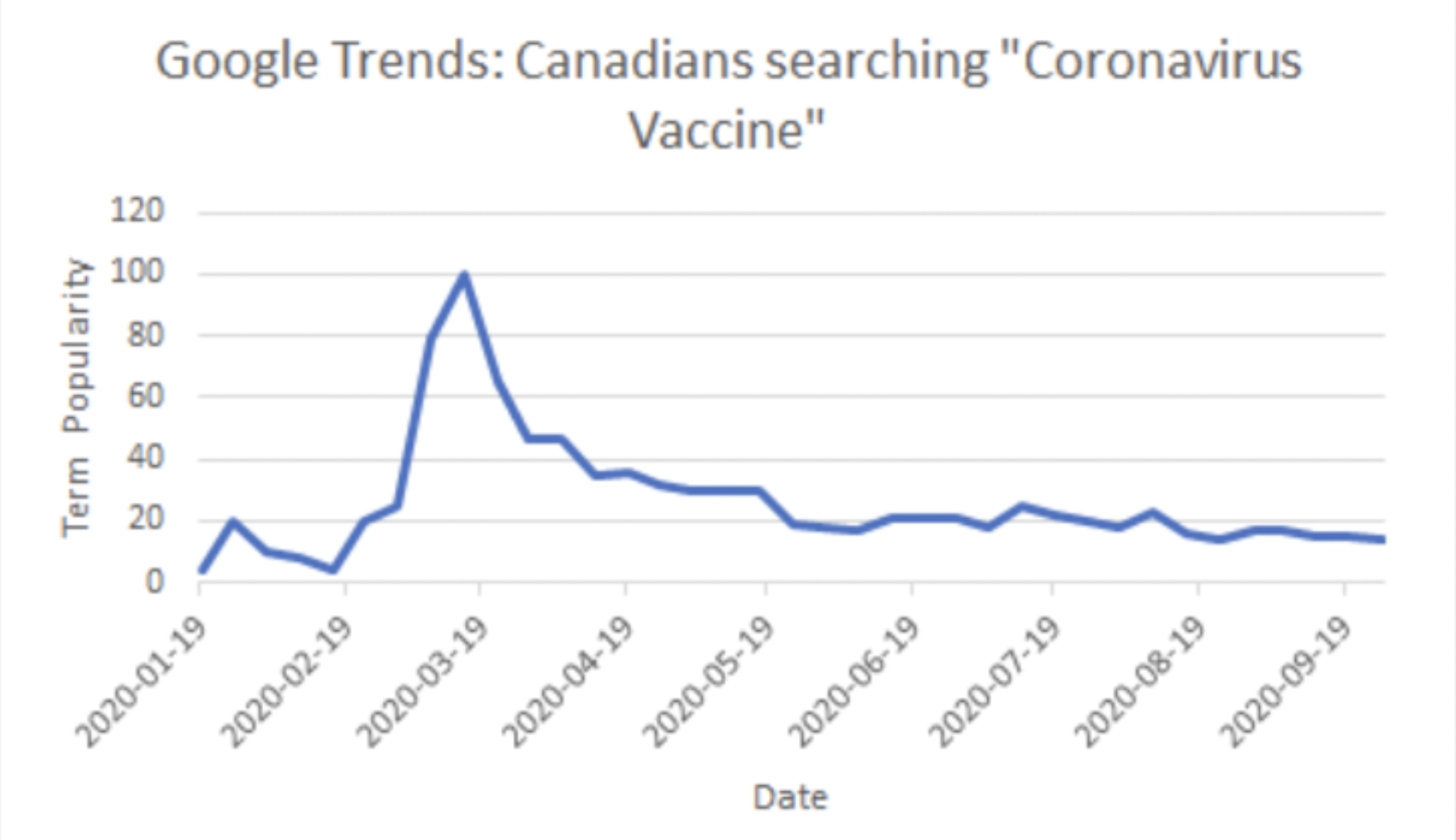On March 11, the World Health Organization (WHO) declared COVID-19 a pandemic although the virus was on the public’s radar since December. The week following Canada entering lockdown, the interest in a vaccine began to surge. Canadians began to look for updates on a potential vaccine for the virus, and in mid-March the search spiked to an all-time high.
“As the federal government announced the COVID19 lockdown searches for ‘Coronavirus Vaccine’ skyrocketed.” (Photo Credit: Google Trends)
Ever since the world has been following the development of vaccines, awaiting for a solution to the pandemic.
The second wave hit Ontario recently, marking a record of 732 confirmed cases in a single day on October 2.
For second-year biomedical science student Veedhi Solanki, this shows that a vaccine is crucial to return to normalcy.
“I would get a vaccine for sure because I want to travel to my hometown. I feel it is important to spread basic knowledge about the COVID-19 vaccine.”
The creation of a vaccine has been a top priority worldwide, with many countries forming a cooperative organization to join efforts at creating a vaccine, called COVID-19 Vaccines Global Access Facility (COVAX).
The group is working on multiple vaccines with varying timelines on when they’ll be available. A British-Swedish company AstraZeneca is the first applicant proposing a vaccine for Canadians, and is currently under review by Health Canada to see if it is a viable option.
What does this mean for Canadians? Firstly, the vaccine must finish testing, and although it is in the final phase, this can still mean months until a viable and safe vaccine is available.
Once a vaccine is available to the public, it will take time to vaccinate 38 million Canadians.
“We’ve never had a situation where we’ve rolled out a single vaccine for 35 million people all at once, as it were. That’s just not possible,” stated microbiologist Alan Bernstein, head of the CIFAR science-funding charity. “We don’t have enough doctors and capacity to do that all at the same time. And that’s even assuming we’ll have enough of the vaccine right from the start.”
Experts say that healthcare workers and at-risk individuals will be given priority in receiving the vaccine.
As Bernstein mentions, it will be difficult to produce enough vaccines immediately, as manufacturing capability falls behind demand.
Even the United States of America, which chose to develop a vaccine by themselves, will not be able to meet their nation’s demand of 350 million until late spring, early summer 2021.
Additionally, experts say that healthcare workers and at-risk individuals will be given priority in receiving the vaccine.
Solanki, who would not have priority in getting a vaccine, agrees with the experts. “I think that doctors or nurses treating COVID-19 patients should get vaccinated. It is also important that people with severe illnesses such as respiratory illness and blood pressure should be given priority to get vaccinated.”
The reasoning for this is to protect the most vulnerable, but it is also considered the best strategy at optimizing a small supply of vaccines. If those most likely to succumb to the illness are protected, the spread of the disease will be hindered.
The desired result would be herd immunity, which is when 60 per cent of the population is immune to a disease (through naturally creating antibodies or via vaccine) and thereby protects the rest of the community by reducing the likelihood of its spread to those who are still at risk.
A return to normalcy seems like it may be far off, but all nations are putting in measures to fast track vaccines as safely as possible. However, until a vaccine does exist and is available to the general public, COVID-19 will remain problematic for most individuals.



